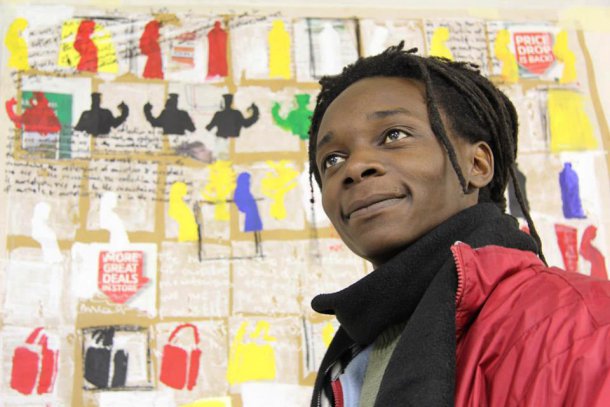A paisagem artística do Zimbabué
Publicado30 Set 2014

Fundador de Voices in Colour, uma organização dedicada a estabelecer ligações entre culturas contemporâneas através do discurso artistico, Mthabisi Phili esteve envolvido em várias iniciativas da National Gallery of Bulawayo, como Discovering Identities (2008), Voices in Colour (2009), Blue-Pencil (2010), Perception360 (2011), P.S. My speak! (2012), and Emergency (2012). O site Another Africa falou com o curador sobre a arte contemporânea no Zimbabué.
Houghton Kinsman | How would you describe the current state of the art scene in Zimbabwe?
Mthabisi Phili | From an economic point of view, it depends on what we compare it to. For instance, comparing the art scene to South Africa and an earlier Zimbabwe will prove that the art scene is less than what it used to be. Economically speaking, sales are less than what they used to be.
From a quality point of view there seems to be more competitive artworks currently as a result of Zimbabwe’s involvement in the Venice Biennale over the past 4 years and also because of the chemistry and contact with the outside world – artists can exchange ideas. For example, Portia Zvavahera can now easily access the South African art market, along with any other artist who has the ambitions to do so.
In terms of education, there is still no tertiary institution that offers a Fine Art degree in Zimbabwe. This is a dire situation for artistic development; organizations like my own Voices in Colour have resorted to workshops in order to educate the usually self-taught artists.
There are still perhaps only 2 main galleries in Zimbabwe, the National Gallery and Delta Gallery. They have stood the test of time and have influenced a lot of artists. They are slowly being joined by other organizations that are now influencing artists through exchange programs and discussions with foreign artists, these are Voices in Colour in Bulawayo and Njelele Gallery in Harare. It still remains a struggle to get artists to familiarise themselves with art practices that are occurring outside the borders, hence existing art organisations have a mountain to climb especially as there are no formal structures for art education.
A entrevista completa, aqui
